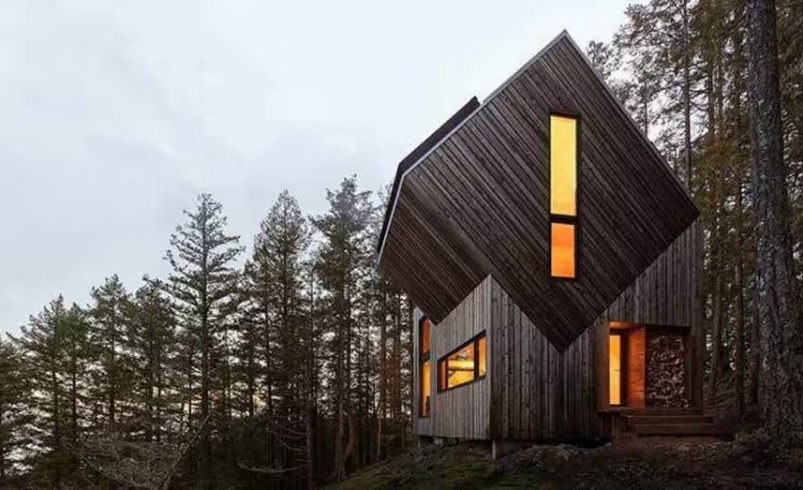Helicopter-Installed Off-Grid Cabin on Keats Island Showcases Sustainable Design
- August 8, 2025
- 0

Perched atop the highest point of British Columbia’s Keats Island, The Nest is an architectural marvel that seamlessly blends sustainability with innovative design. Created by Vancouver-based Daria Sheina Studio, this prefabricated cabin resembles a modern sculpture nestled within a moss-covered forest. Despite its sleek appearance, The Nest operates entirely off the grid and was assembled in just two days, transported by truck, barge, and helicopter.
The initial design concept for The Nest emerged from a simple sketch of two rotated cuboid volumes. Clients Sean Sikorski and Chadd Andre were captivated by its bold simplicity, which became the defining form of the cabin. Constructed in collaboration with BC Passive House, the prefabricated components were meticulously designed to accommodate the island’s rugged terrain and lack of road access. A helicopter was used to airlift these components to the site, assembling them like a life-sized puzzle.
Inside, The Nest features a minimalist design with exposed wood, green Marmoleum floors, and large sliding doors that maintain a connection to nature. The three-story structure includes an open-concept first floor with a living area, kitchen, and bathroom, while the upper levels house cozy bedrooms. Sustainability is at the core of The Nest’s design, with solar panels providing power and a rainwater collection system supplying drinking water. An incinerating toilet manages waste efficiently.
The Nest exemplifies how off-grid living can be both comfortable and environmentally friendly. Its compact footprint minimizes environmental impact while offering luxury and privacy. This innovative model demonstrates that sustainable systems and smart logistics can be replicated in other remote locations, proving that off-grid doesn’t mean sacrificing comfort or beauty.